

Doubtful Sound
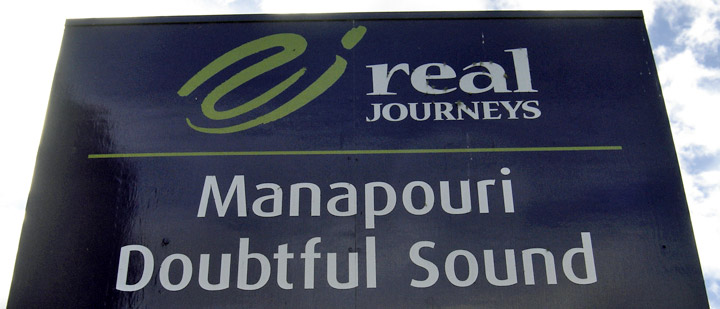
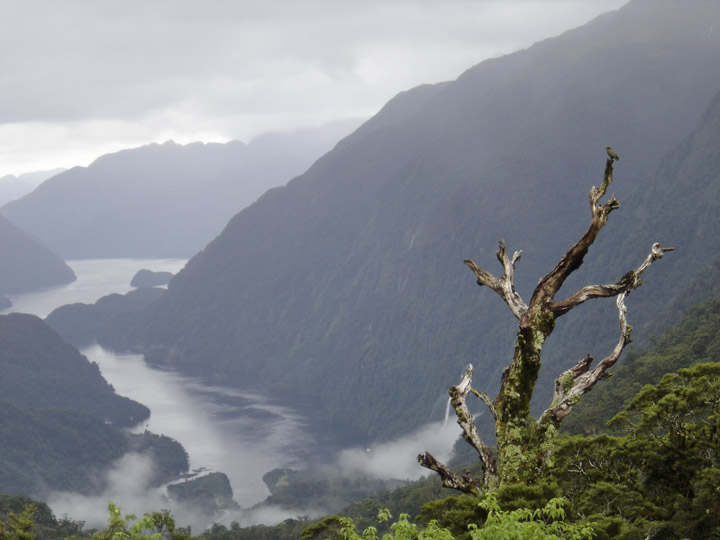
Doubtful Sound
Doubtful Sound is a very large and naturally imposing fjord (despite its name) in Fiordland, in the far south west of New Zealand. It is located relatively close to the smaller but more famous and accessible Milford Sound. It took second place after said Fiord as New Zealand's most famous tourism destination.

boat for transit of Lake Te Anau

Doubtful Sound was named 'Doubtful Harbour' in 1770 by Captain Cook, who did not
enter the inlet as he was uncertain whether it was navigable under sail. It was
later renamed Doubtful Sound by whalers and sealers.
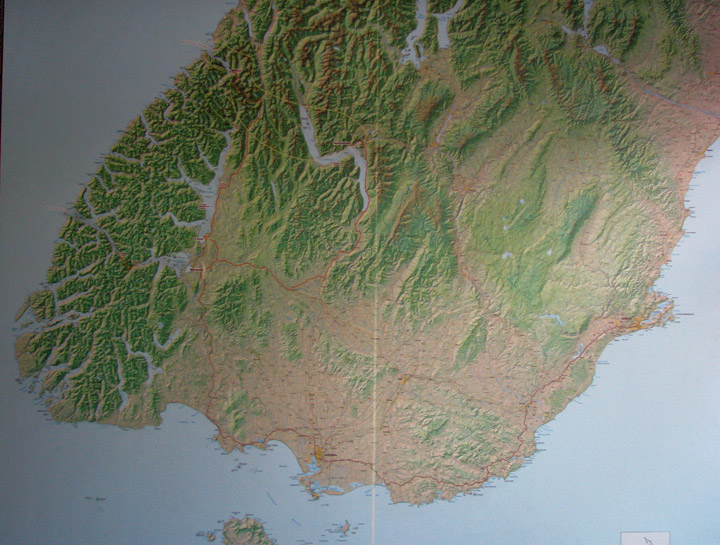
map of the Southern part of the South Island
A Spanish scientific expedition commanded by Alessandro Malaspina visited Doubtful Sound in February 1793 to conduct experiments measuring the force of gravity using a pendulum, a part of the effort to establish a new metric system. The officers of the expedition, which included Felipe Bauzá y Cañas, a cartographer, also made the first chart of the entrance and lower parts of the Sound, naming features of it. Today these form a unique cluster of the only Spanish names on the map of New Zealand: Febrero Point, Bauza Island and the Nee Islets, Pendulo Reach and Malaspina Reach.
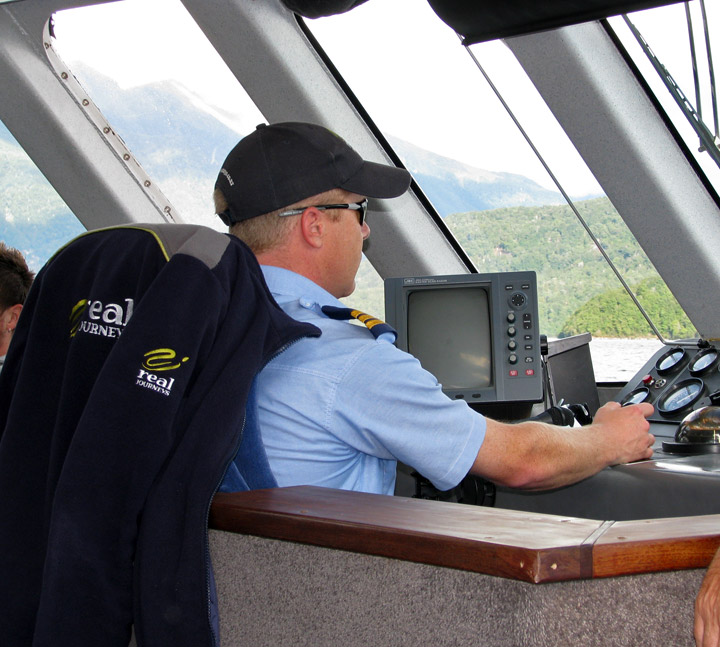
There are three distinct arms to the sound, which is the site of several large
waterfalls, notably Helena Falls at Deep Cove, and the Browne Falls which have a
fall of over 600 metres. The steep hills are known for their hundreds of
waterfalls during the rainy season.
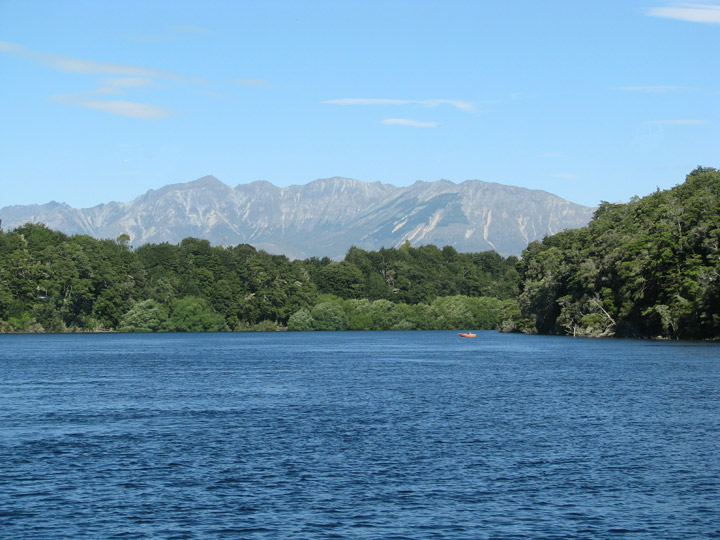
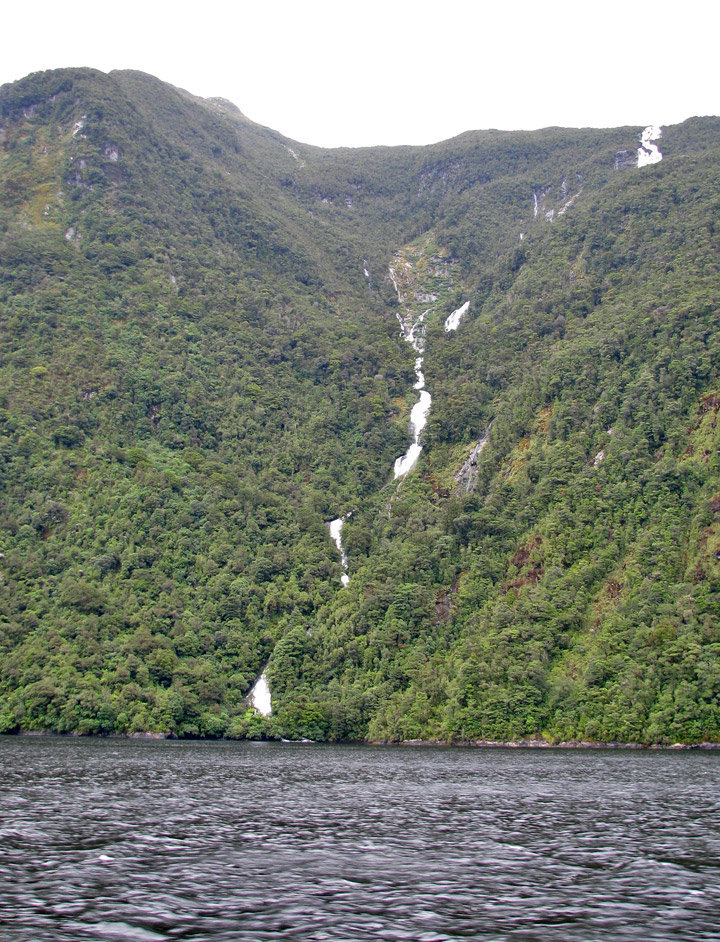
on Lake Te Anauau
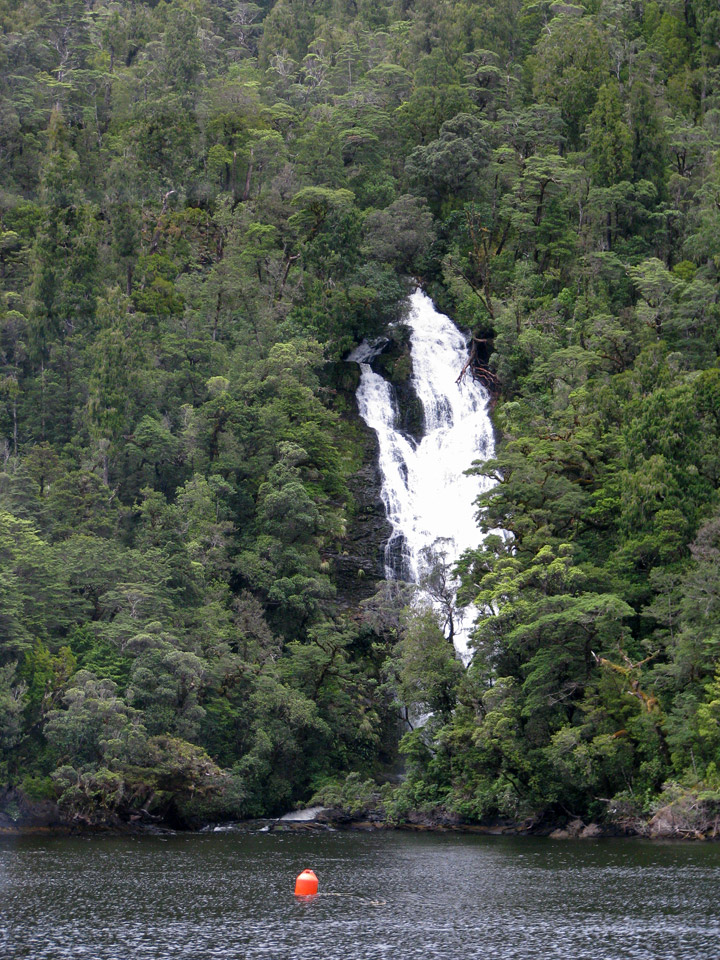

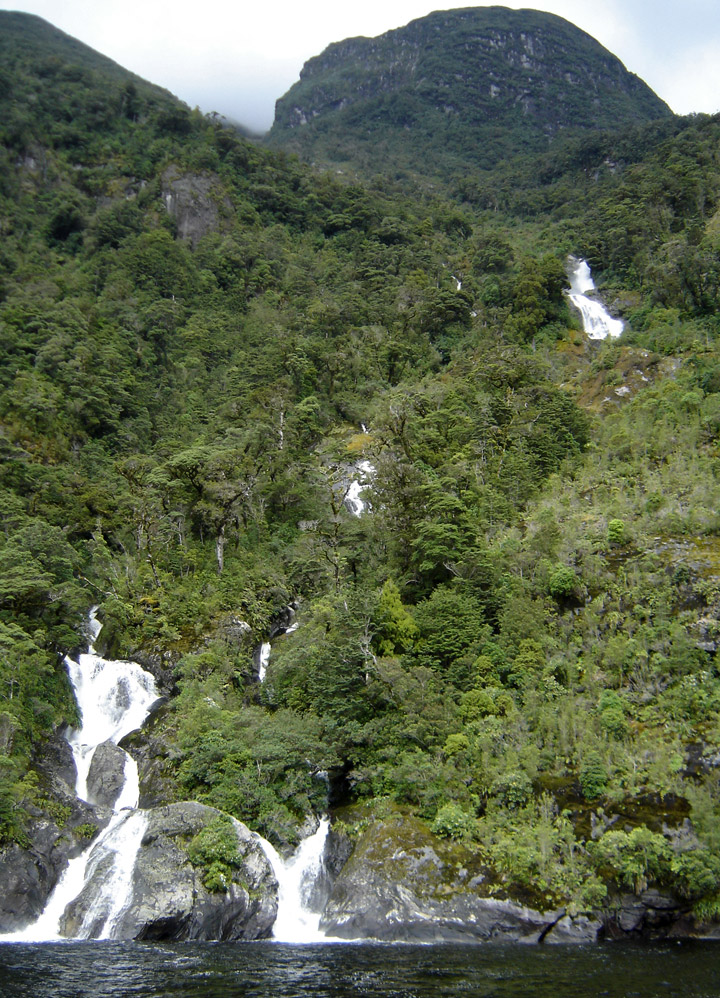
Access to the sound is either by sea, or by the Wilmot Pass road from the Manapouri Power Station. Most areas of the sound itself are only accessible by sea however, as the road network in this area of New Zealand is sparse or nonexistent, as is the human population.
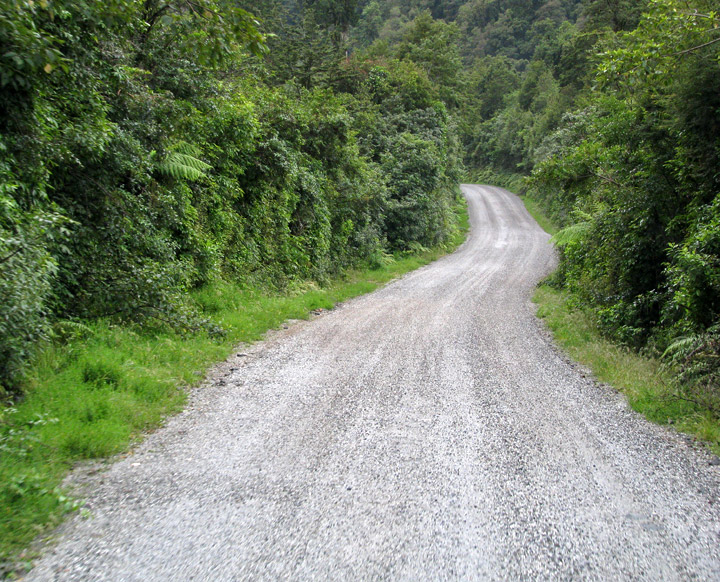
Wilmot Pass Road
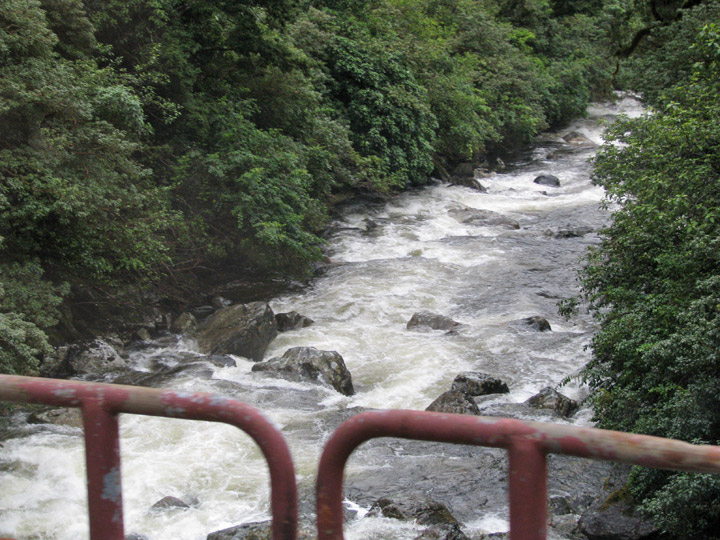
passing over a West draining stream
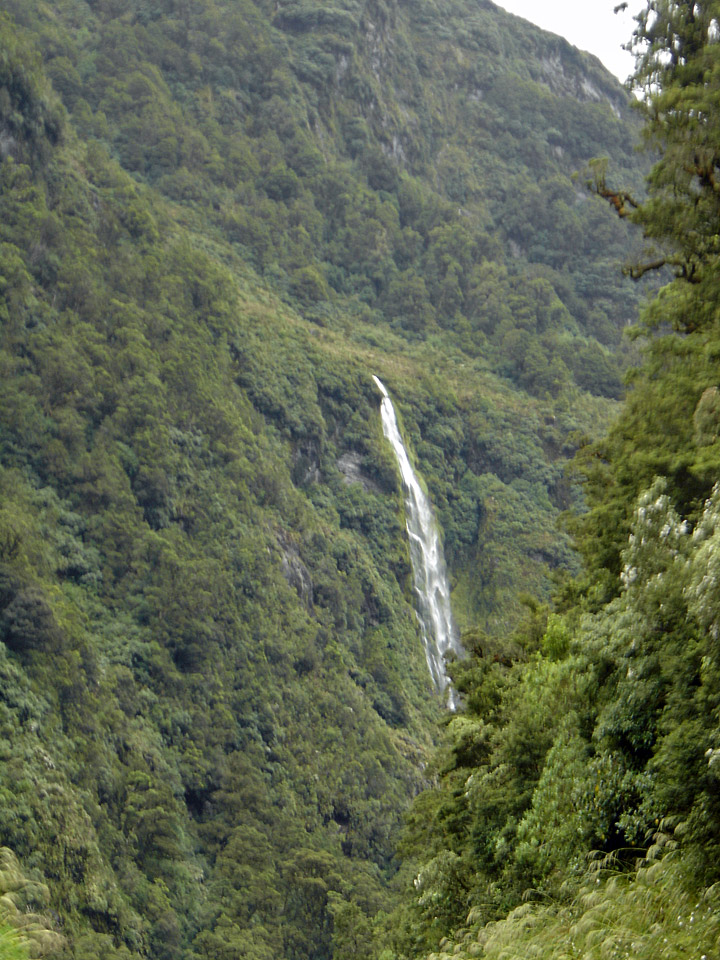
Charles John Lyttelton, 10th Viscount Cobham, Governor-General of New Zealand (1957-1962) wrote about this part of Fiordland:
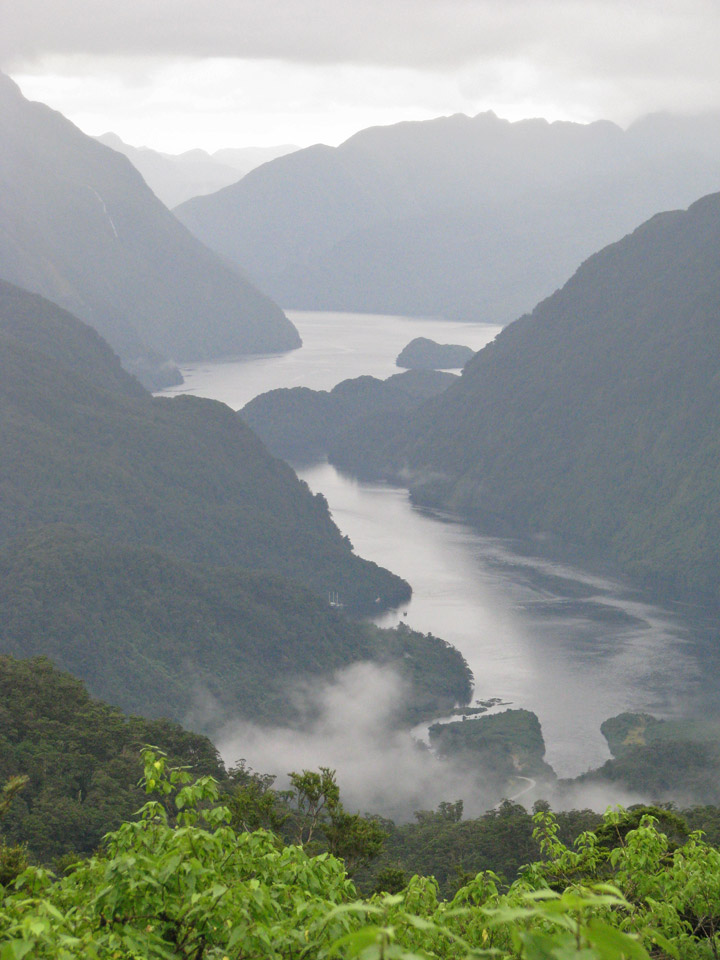
view of Doubtful Sound
"There are just a few areas left in the world where no human has ever set foot. That one of them should be in a country so civilized and so advanced as New Zealand may seem incredible, unless one has visited the south-west corner of the South Island. Jagged razor backed mountains rear their heads into the sky. More than 200 days of rain a year ensure not a tree branch is left bare and brown, moss and epiphytes drape every nook. The forest is intensely green. This is big country... one day peaceful, a study in green and blue, the next melancholy and misty, with low cloud veiling the tops... an awesome place, with its granite precipices, its hanging valleys, its earthquake faults and its thundering cascades."

Kea
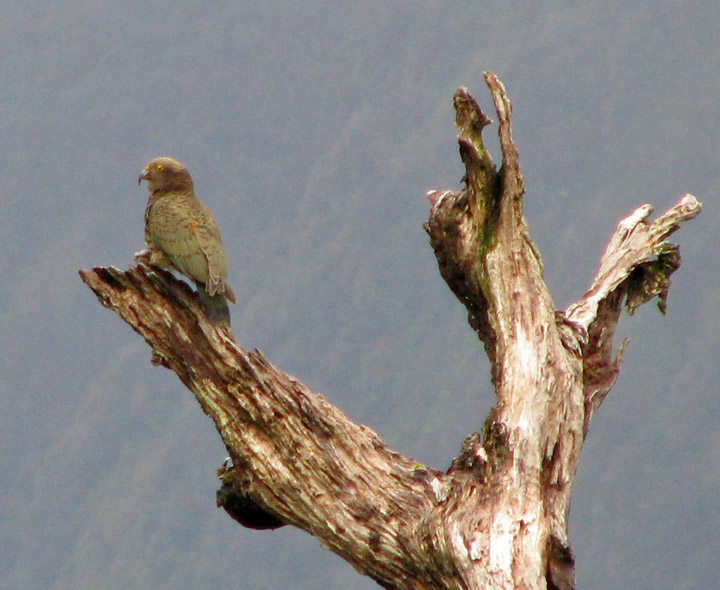
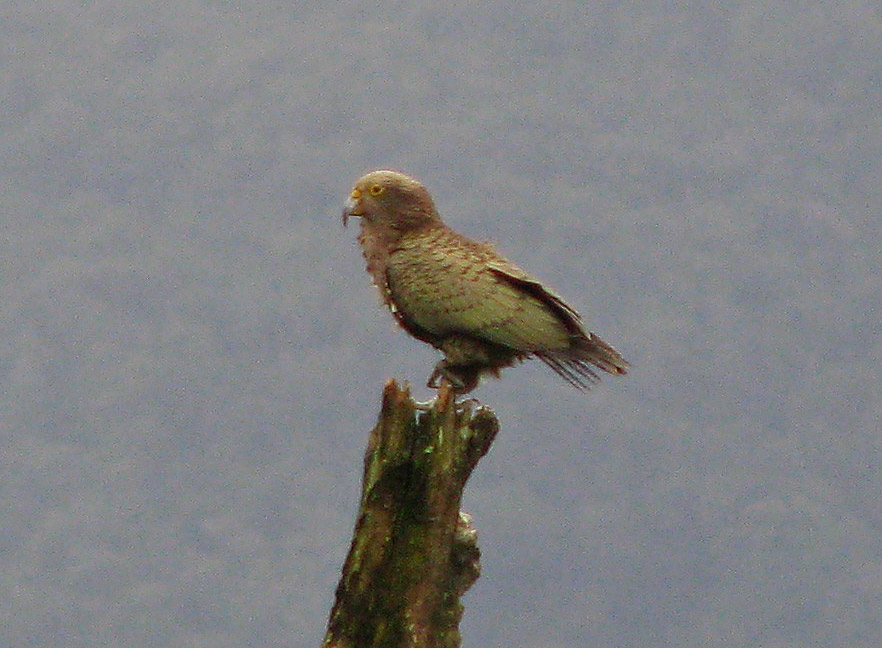
Doubtful Sound is unusual in that it contains two distinct layers
of water that do not mix. The top few meters is fresh water, fed from the high
inflows from the surrounding mountains, and stained brown with tannins from the
forest. Below this is a layer of cold, heavy, saline water from the sea. The
dark tannins in the fresh water layer makes it difficult for light to penetrate.
Thus, many deep-sea species will grow in the comparatively shallow depths of the
Sound.
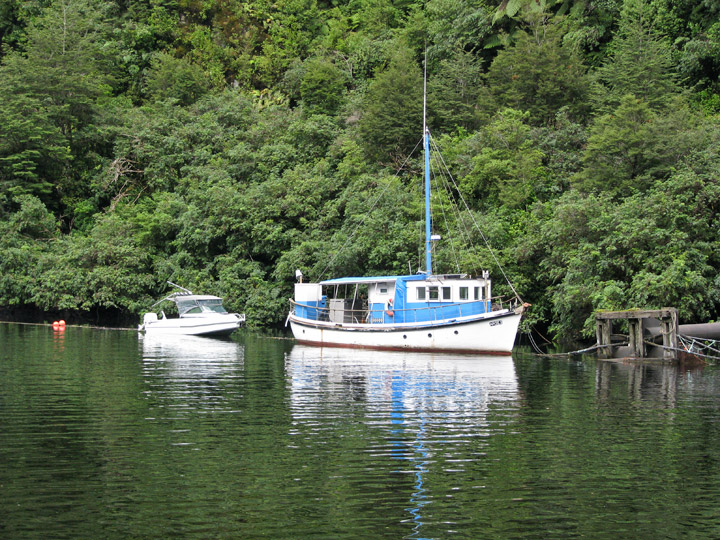
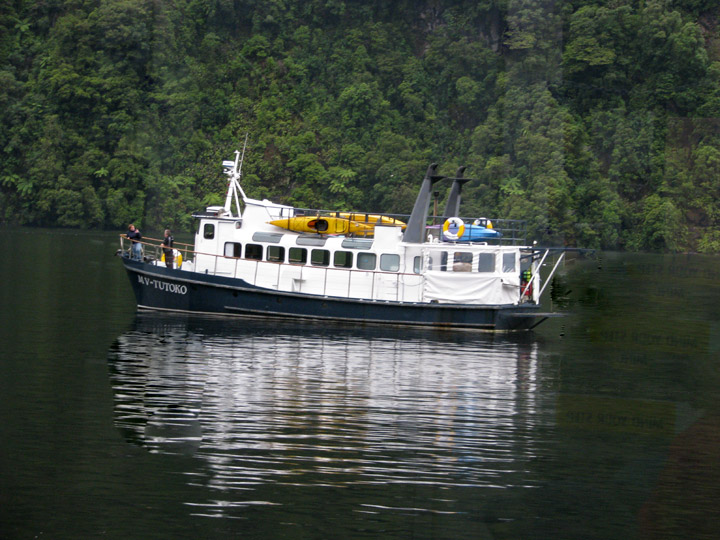
on Doubtful Sound
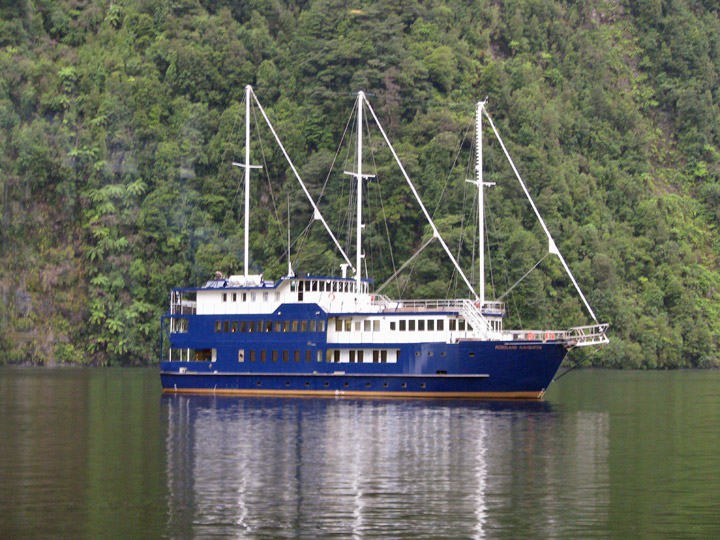
This fiord is home to one of the southernmost population of bottlenose dolphins.
The Doubtful Sound bottlenoses have formed a very insular sub-group of the only
about 70 individuals, with none having been observed to leave or enter the Sound
during a multi-year monitoring regime. Their social grouping is thus extremely
close, which is also partly attributed to the difficult and unusual features of
their habitat, which is much colder than for other bottlenose groups and is also
overlaid by the freshwater layer. Recently (2000s), there is growing concern
that the population is in significant decline, with calf survival rates having
halved, as well as being noticeably lower than in captivity or in other New
Zealand environments. The reasons for this are unclear, though increased tourism
or the fresh-water discharge from the
Manapouri Power Station are considered potential causes.

on Doubtful Sound
Other wildlife to be found in Doubtful Sound includes fur seals and penguins (Fiordland crested and blue), or even rare large whales (Southern Right, Humpback, Minke, Sperm and some Beaked Whales). The waters of Doubtful Sound are also home to an abundance of sea creatures, including many species of fish, starfish, sea anemones and corals. It is perhaps best known for its black coral trees which occur in unusually shallow water for what is normally a deep water species.
Text from Wikipedia
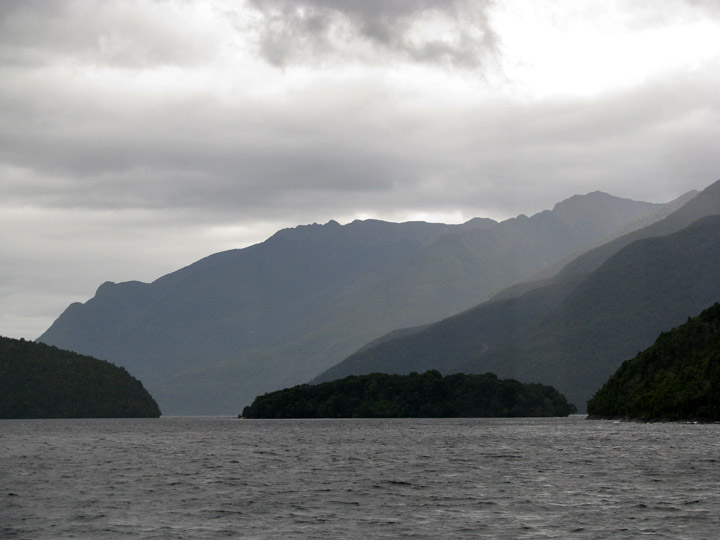
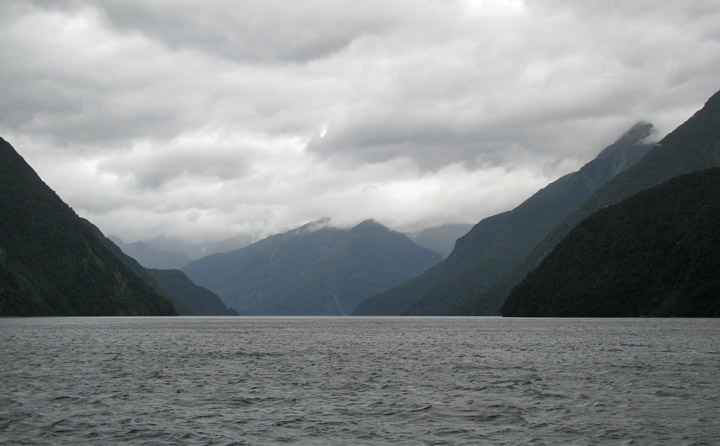
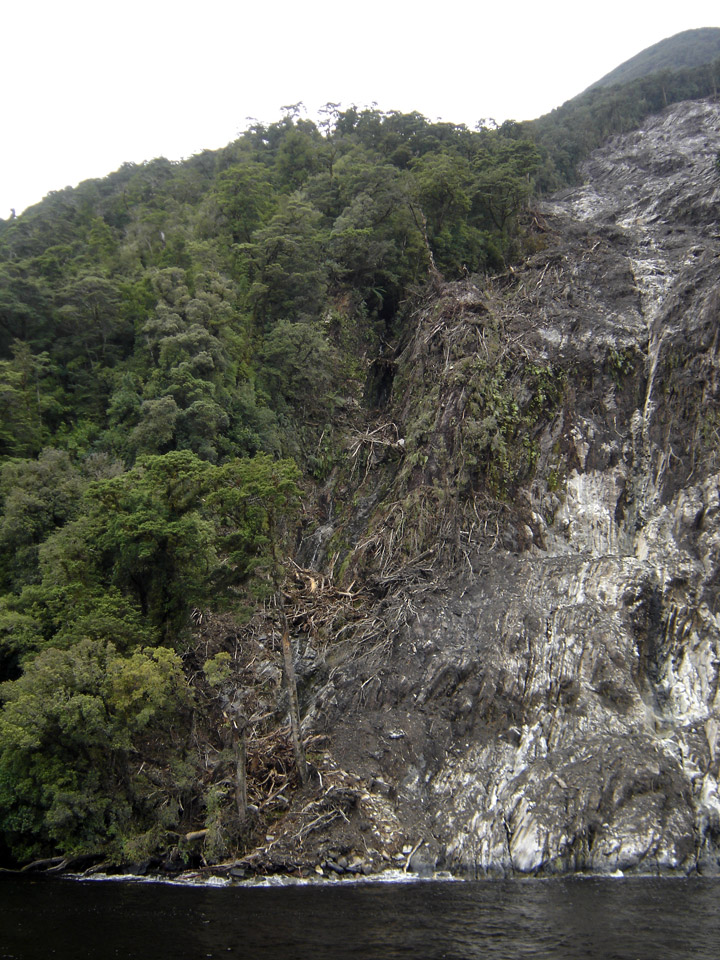
tree slide site
total vegetation fell into the sound
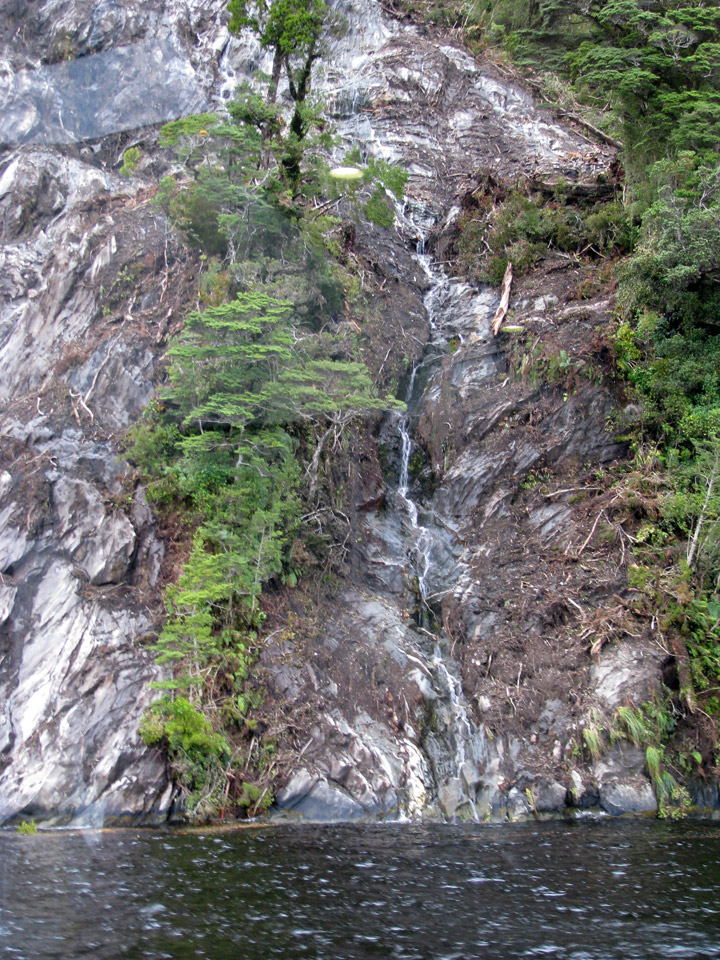
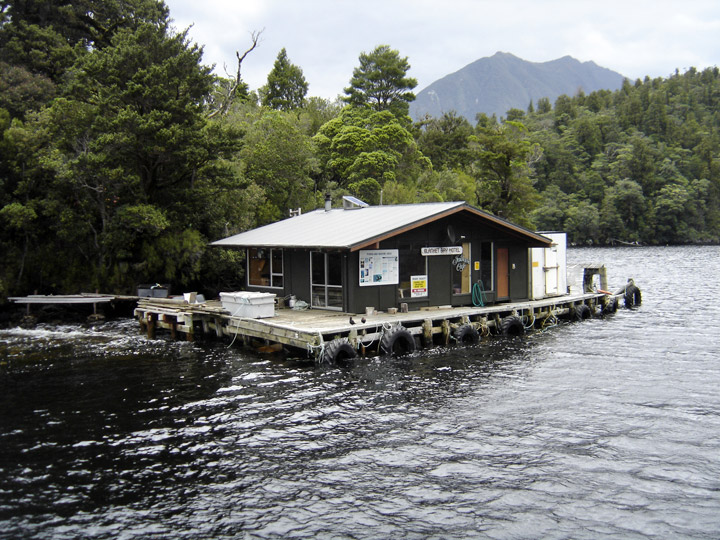
fishing cabin near the West ocean coast

the return road

last view of Doubtful Sound